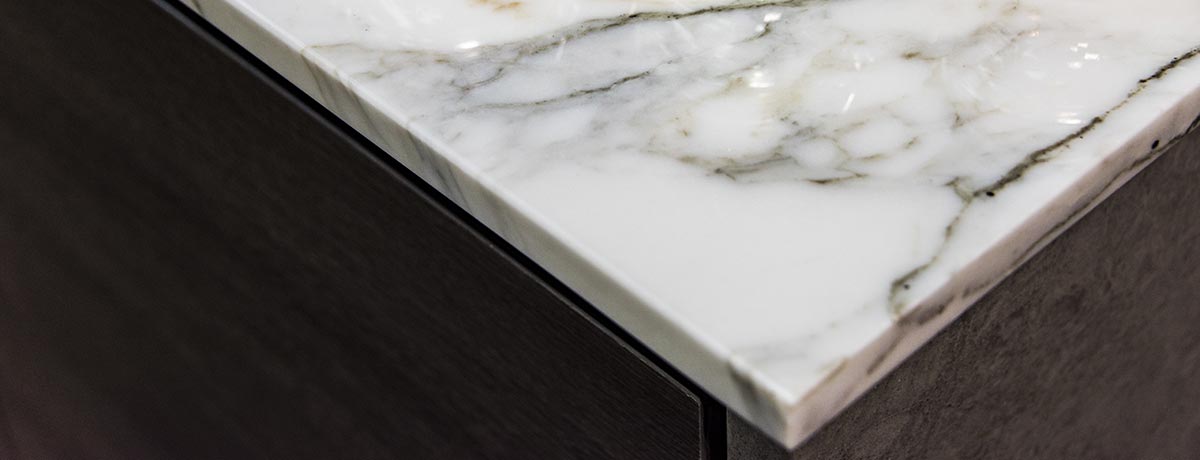How to Clean Marble Countertops

Marble is a beautiful, elegant and timeless stone. If you’re in love with the look of marble, there’s probably no substitute. However, to retain marble’s beauty, a little extra care is required. Don’t worry, it’s worth it.
Preventive Countertop Maintenance
Don’t let spills sit. Clean up any messes immediately to reduce the risk of staining and etching. Don’t use abrasive scrubbers or rough cloths when cleaning, because they can scratch the stone. For big messes and deeper cleaning, follow the steps below.
Use cutting boards, trivets and coasters. Marble is by no means fragile, but it is susceptible to damage from extreme heat, sharp edges, wet spots and a number of chemical reactions. Cutting boards, hotpads or coasters aren’t always needed, but they are a simple precaution that will help prevent damage.
Avoid contact with acids. Never use vinegar or citrus solutions such as lemon or orange for cleaning marble. In fact, avoid contact with these substances altogether. Marble is very sensitive to acids. They can eat into the surface leaving discoloration and rough spots. You’ll hear the term “etching” a lot when learning about marble. Etching is a corrosive chemical reaction that occurs when acids interact with the stone. It causes physical damage to the stone. You can learn more in our Marble FAQ.
Here are a few items to avoid using on marble countertops:
- Vinegar
- Windex
- Ammonia
- Bleach
- Acidic cleaners (lemon, orange, etc)
- Rough Sponges
- Steel Wool
Cleaning Marble Countertops
The best way to clean marble is with non-abrasive dish soap and warm water. Make sure it’s a pH neutral, non-acidic soap. Apply a thorough covering of the soapy water. A spray bottle can be used to evenly distribute the soap solution. You can gently scrub the stone with a soft cloth if needed. Don’t use rough sponges or scrubbing cloths, just a nice soft towel.
Next, use a clean wet cloth to wipe away the soap. It’s sometimes helpful to use another spray bottle with plain water to rinse the counter. You may need to repeat this step a few times to make sure you get rid of all the soap residue.
Finally, use a clean, dry soft towel to dry the countertop thoroughly. After wiping away all of the moisture, a final pass with a chamois or microfiber cloth will add some shine. Don’t leave any water behind. Marble is porous, so standing water and liquids that penetrate unsealed areas could lead to stains or etching.
There are a number of marble-specific cleaning products and polishes available in stores. Many of these products are fine, as long as you make sure they’re made for marble and not some other stone. Also, make sure you have reviewed your stone manufacturer/installers guidelines for cleaning your specific stone, as methods may vary from manufacturer to manufacturer.
The best way to help your marble countertop retain its natural beauty is to seal your marble regularly, make frequent cleaning a habit and follow preventative maintenance suggestions. A little TLC will help your stone counter last a lifetime.


